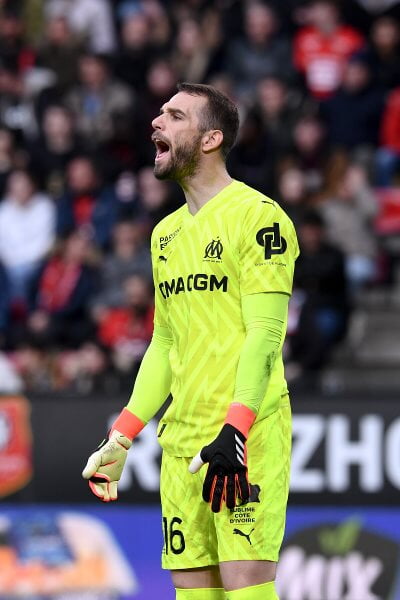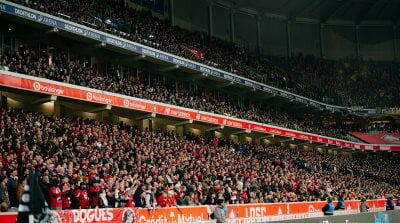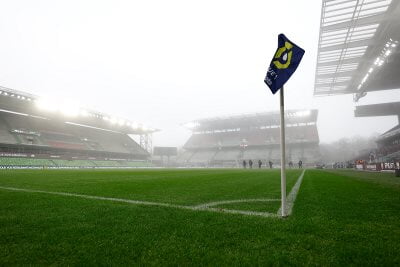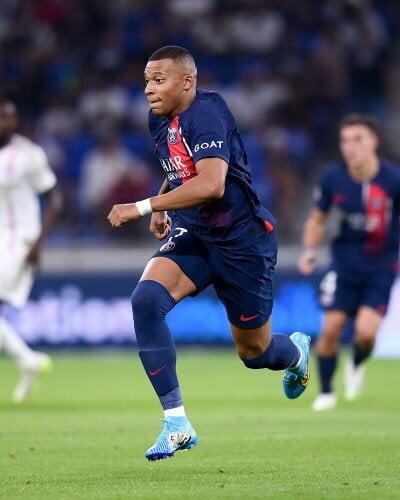Regulations, maintenance, different types of grass... Everything you need to know about Ligue 1 Uber Eats pitches and how their quality is assured...
After four rounds of Ligue 1 Uber Eats, Paris Saint-Germain are ahead of Montpellier HSC and Angers SCO at the top of the BKT Pitch Championship (21-22). This championship was created several seasons ago to promote the quality of playing surfaces in the French top flight. Although there is no miracle recipe for having a beautiful pitch at all times, the more attention you pay, the greater the chances of ending up with a 'billiard table'.
Turf is a living being subject to many external factors that Ligue 1 Uber Eats clubs' grounds staff follow closely. Regulations, maintenance, different types of turf... here's everything you need to know about the league's pitches, from their dimensions to the number of gardeners - and the cursed Pyricularia!
Equal dimensions and pitch supervisors
Ligue 1 Uber Eats and Ligue 2 BKT pitches are subject to a number of rules. The FFF sets the dimensions of the pitch, as the professional level of football requires strict consistency across all pitches. The playing area must be 105 metres long and 68 metres wide, while the goalposts must be 2.44 metres high and 7.32 metres wide. The white lines must be between 10 and 12 centimetres in width.
The LFP regulates the use of the pitch: from the timing of watering to the use of mobile goals during the warm-up and the height of the grass mowing (from 24 to 28 millimetres). As for the mowing pattern, the LFP asks clubs to follow UEFA rules, i.e. 18 longitudinal strips of 5.50m to 6.10m, as well as 12 wide strips, of 5.50m to 6.00m.
The objective is to have a grid, with gradations along the length of the pitch, in order to have uniformity among all the stadiums and thus to facilitate the legibility of the game, in particular for the referees in their management of off-side situations. Unlike other sports such as rugby, images and advertisements are prohibited by the IFAB (the body that determines the rules of the game), which wishes to keep the pitch free of any element external to football.
The LFP also requires clubs to have a pitch supervisor, a person qualified in the management and maintenance of sports pitches, in order to ensure that they have a competent contact person for specific technical issues relating to turf. This person is sometimes employed by the club, but in the majority of cases, it is an employee of the local municipal authorities that owns the stadium or of a company that provides services to the club. And what about the groundspeople? On average, there is one full-time person working at the stadium on a daily basis, who is supported by a team of five people for the matches.
Synthetic turf is not allowed
There are three types of substrates used in French professional leagues:
- earth-sand (13%)
- processed (7%)
- reinforced or 'hybrid' (80%)
Synthetic turf pitches were banned by the LFP in 2017 because they present a very different playing comfort for players compared to natural pitches. Synthetic turf affects the quality of the game and, for reasons of uniformity and fairness, only natural turf is accepted.
The big advantage of artificial pitches, and even more so of reinforced pitches, is their ability to absorb heavy use (an average of ten hours per week at a training site depending on the technology and time of year). The other big advantage of engineered and reinforced pitches is their ability to be uniform throughout the playing area in terms of properties, which limits injuries. They are more specifically prepared for top-level sport and are more resistant to the harsh winter weather conditions.
The more recent the technology, the more the pitch requires specific maintenance, with regular operations to maintain the quality of the product: aeration, dethatching, coring, scarification, etc. Scalping is often necessary in the summer to remove as much material as possible in order to regenerate the pitch with new turf. Such a practice is not always possible with a sandy soil, where rooting is important to keep the soil stable. As it stands, the herbaceous component of a latest-generation pitch lasts one season, before being changed each summer (keeping all the reinforced part), in order to limit the risks of loss of quality for the following season.
The holding of events other than sporting events, such as concerts or even motocross events, is complex to manage at the end of the season, as the renovation schedule is reduced. Indeed, the time needed for complete regeneration of a quality pitch is about eight weeks in good conditions.
A living being in its own right
Like any other living thing, grass has many needs. It needs moisture (watering), food (fertilisation) and also breath (aeration), in order to encourage photosynthesis by the plant, before being dressed up (mowing) when it has grown sufficiently.
Weather monitoring is also crucial in the management of the pitch, in order to protect it from problematic weather conditions. The configuration of the stadium, especially its orientation, the height of its stands, its possible total closure and the size of its roof are all factors that can influence growth. To compensate for this, many technologies have been developed. Light therapy provides additional light in areas that are mostly shaded. Ventilation dries out the leaves. Thermal regulation keeps the vegetation active even during the winter period and prevents frost from forming on the playing surface.
Monitoring of the various parameters is also very important as it helps to prevent the appearance of diseases or fungi, which can be devastating to the pitch in a very short time. High summer temperatures, combined with high humidity, are the most dangerous enemies of freshly sown seeds. The preventive work of the turf advisors is crucial because some diseases, such as the dreaded fungal disease Pyricularia, as yet have no known cure.
>> User's manual: Five substitutions rule
>> User's manual: Cooling Break





